The prototype of what became the I-16 was first flown by the famous test pilot Valeriy Chkalow on 30th December 1933.
Then, it was the first cantilever monoplane fighter with enclosed canopy and retractable landing gear.
It was moved by a 480 hp M-22, a Soviet-built version of the Bristol Jupiter VI.
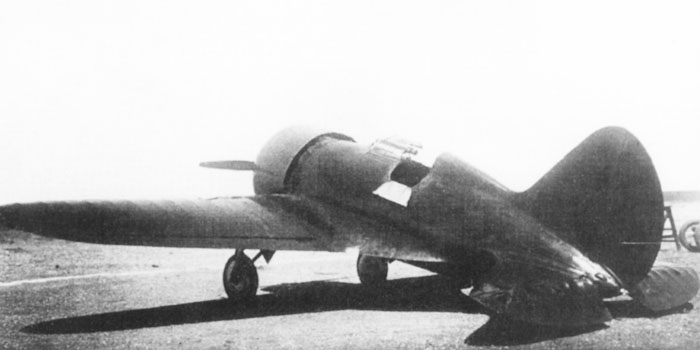
An image of TsKB-12 with two-blade propeller in spring 1934. 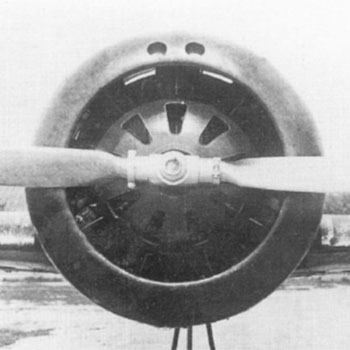
The color could be gloss red overall, with blue cowling and stripe on each side, without national markings as the later TsKB-15 (I-17).
The propeller was left unpainted, while the langing gear bays were probably of the color of the outside.
(From Polikarpov I-16 fighter of Y.Gordon and K. Dexter)
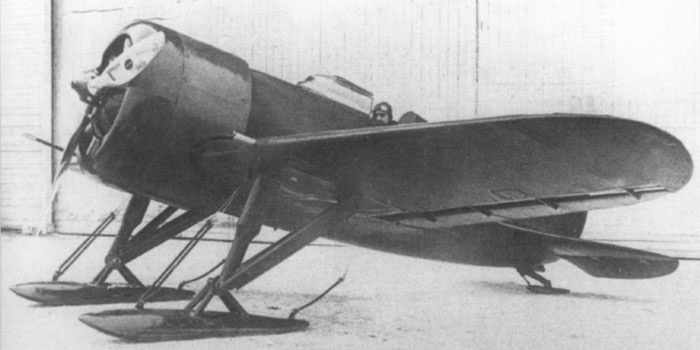
The TsKB-12 fitted with skis and a three-blades Hamilton Standard propeller, and Evgenii Chalow in the cockpit.
The plane was armed with two PV-1 machine guns on the wings.
(From Polikarpov I-16 fighter of Y.Gordon and K. Dexter)
Since the late 20s, Soviets started to paint their military planes with a dark greenish khaki paint called Zashchitnyi, that means 'protective' because it makes the plane less visible.
The undersurfaces were painted in a light grey-blue shade.
 camouflage olive green (zashchitnyi)
camouflage olive green (zashchitnyi)
 light grey-blue
light grey-blue
The first version, hurrily put in production in factory n.21 at Gorky and Factory n.39 at Khodynka, was produced in about 400 planes between 1935 and the spring of 1936. It was very similar to the prototype with M-22 engine.
Its armament consisted in two ShKAS machine guns mounmted on the wings.
I-16 type 1,2,3 never existed; the designation type 4 was because it was the fourth type of plane to be built in factory n.21.
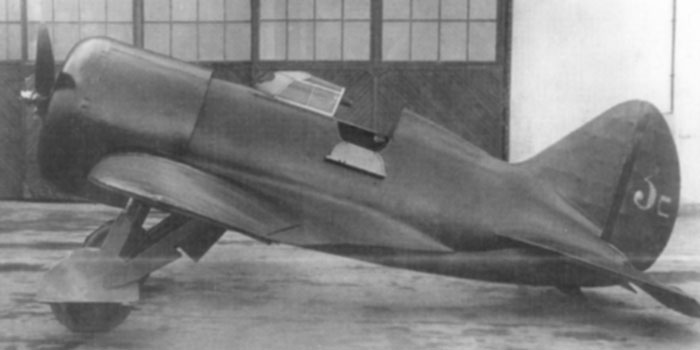
 The inscription
3s means that this is the third I-16 type 4 built in factory n.39.
The inscription
3s means that this is the third I-16 type 4 built in factory n.39.
Differently than the prototype, it has complete landing gear doors. National insigna have not yet applied.
A visible differenc,e compared to the prototype, was that the cowling appears more extended backward on the top and sides, but not on its lower part.
Right: detail of the forward-sliding canopy and OP-1 optical sight.
(From Polikarpov I-16 fighter of Y.Gordon and K. Dexter)
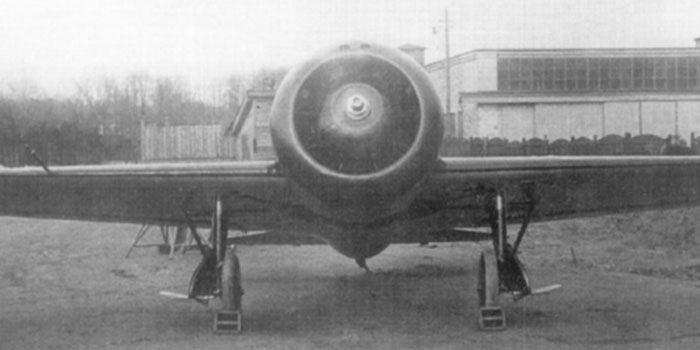
 The same
plane, still unmarked. Note the dark color (black?) of the landing gear.
The same
plane, still unmarked. Note the dark color (black?) of the landing gear.
(From Polikarpov I-16 fighter of Y.Gordon and K. Dexter)
Right: the asymmetry of the tail of the I-16, put in evidence on this photo of an UTI-4 preserved in a Finnish museum. This was intended to balance the rotational forces due to the spinner.
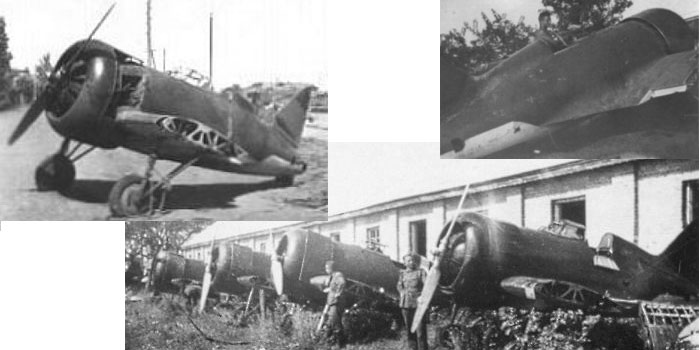
I-16 type 5, equipped with engine M-25A (licensed copy of the Wright Cyclone R-1820F-3), was the first version to be mass-produced at Factory n.21. This version was in production from 1937 to 1939.
The first batches were characterized by the early angular sliding canopy and the OP-1 telescope-style gunsight and by long ailerons, and were armed with only two 7,62 ShKAS machine guns on the wings.
The last batches of type 5 passed to the later style open canopy and, later, to the PAK-1 reflector gunsight.
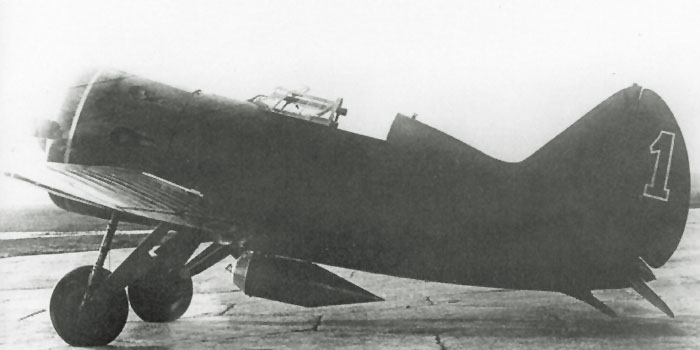
This image shows a very early type 5 'red 1' photographed at NII VVS with an experimental fuel tank.
The new cowling of the M-25A with drop-sized exhaust recesses is clearly recognizable.
The wing has still 11 ribs only, as on type 4; during its evolution, the type 5 received a stronger wing with 22 ribs.
(image from Red Stars n.3, P

An I-16 type 5 exposed to the Milan exhibition in 1935. The plane seem to show a red/silver or red/white livery.
(From Profile n.122)
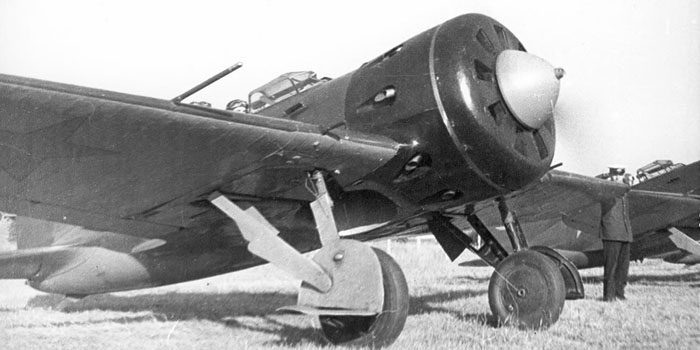
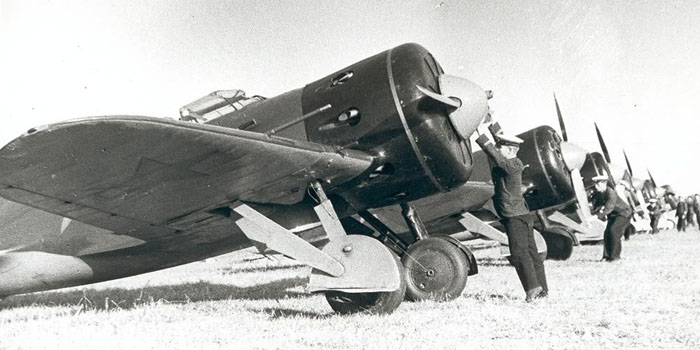
These I-16 type 5 of the Baltic Fleet were photographed in June 1939 but built about in 1936. The version is immediately recognizable for its angular sliding hood and for its telescope-style gunsight; also, the lack of guns, oil and carburettor intakes on the engine cowling allows to distinguish type 5/6 from the subcessive variants of the I-16.
These planes are well representative of the livery with olive-green uppersurface and light grey-blue undersurface, with black engine cowling.
The red star under the wing has a thin black outline, but not the thin black circle seen on other types.
The propeller was unpainted on the front face of blades, while the rear face was painted black to not glare the pilot.
Note the dark, perhaps black, landing gear inside, while bays are of the color of external undersurfaces.
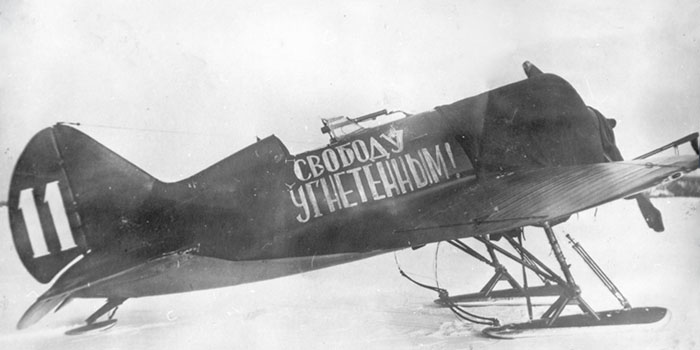
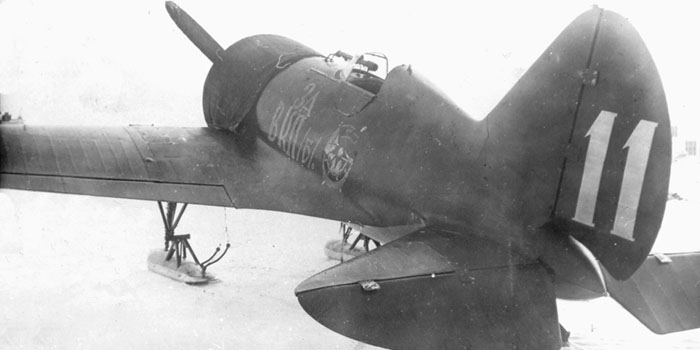
Ski-equipped type 5 of 13th Avio Escadrille of the 61st Avio Brigade of the Red Banner Baltic Fleet Air Force during the Winter War. The plane was flown by Major Gubanov.
The slogan on the right side means "Freedom to the Oppressed!"; the one on the opposite side means "Za VKP(b)" = "For the All-Union Communist Party", and probably are painted in silver; in facts, supposing that both them are of the same color, we see that it changes very much with the angulation.
Although the photo was taken in 1940, this plane was built in 1936/37 and it has likely the typical livery of the period, as probably had the plane of the photo below.
Although the rails of the early type sliding canopy are visible, the plane has a small windshield as on later versions, but still the telescope-type gunsight.
In the second photo, the wide ailerons of the type 5 are well visible; they arrive up to the wing fillet. The ailerons were shortened on type 10 and later variants.
The ski landing gear of type 5 was not retractable; the possibility of retraction of the skis was introduced with the type 10.
Red stars, although scarcely visible, were painted on the fuselage sides as usual . See http://sovietwarplanes.com/board/index.php?topic=1047.0
Images from http://www.bellabs.ru/Fotab/Sov-Fin/Sov-Fin.html
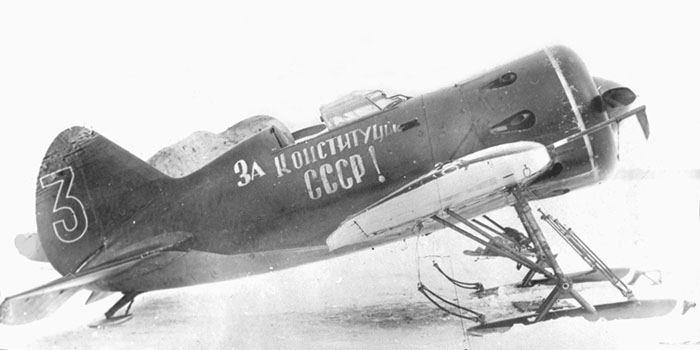
Ski-equipped type 5 'red 3' of 13th Avio Escadrille of the 61st Avio Brigade of the Red Banner Baltic Fleet Air Force during the Winter War. The plane was flown by Senior lieutenant Novikov.
The slogan means "For the Constitution of the SSSR!", probably painted in silver. It is not known if there were other slogans on the other side. Probably 'Za' is overposed to the tip of a standard red star, not contrasting on this photo.
The painting could be the original one of 1936.


Plane 3-1 wrecked after the war outbreak. Note the unusual double number on the rudder and the white trasversal band, apparently not extending to the lower surface of the fuselage.
The plane features the characteristic black cowling of type 5s, so the colors should have been unchanged.
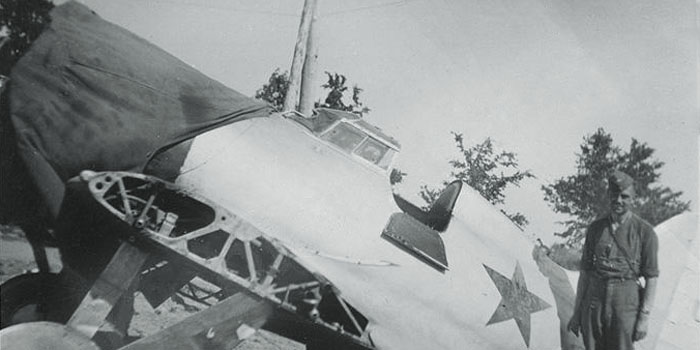
I-16 type 5 with light grey finish and black cowling. Probably it was utilized for training.
On the rudder, a part of a number is visible, possibly a yellow 6 or 8.
In 1937, the standards of painting the Soviet military planes were modified by the gradual introduction of new paints:
- AE-x paints were oil enamels for external metal surfaces, resistant to atmospheric agents; they usually were utilized on a layer of ALG-1 yellowish primer, but could be utilized on unprimed metal too;
- AII (or A 2nd) colors were nitrocellulosic lacquers; they could be utilized on wooden and fabric surfaces, primed by a layer of yellowish nitroputty and/or aluminuim paint, and on metal surfaces over some primier (usually ALG-1 zinc-chromate yellowish paint).
 AII Z gloss camouflage green
AII Z gloss camouflage green
 AE-9 gloss
light grey (for metal) and AII light grey (for wood/fabric)
AE-9 gloss
light grey (for metal) and AII light grey (for wood/fabric)
 AII
aluminium
AII
aluminium
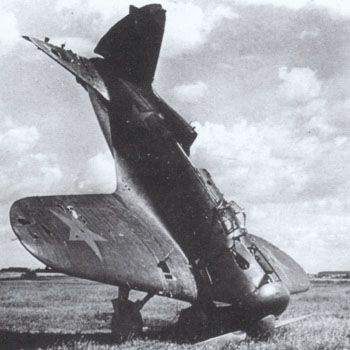
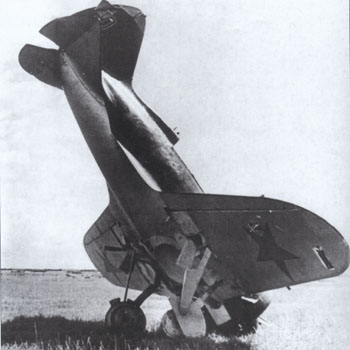
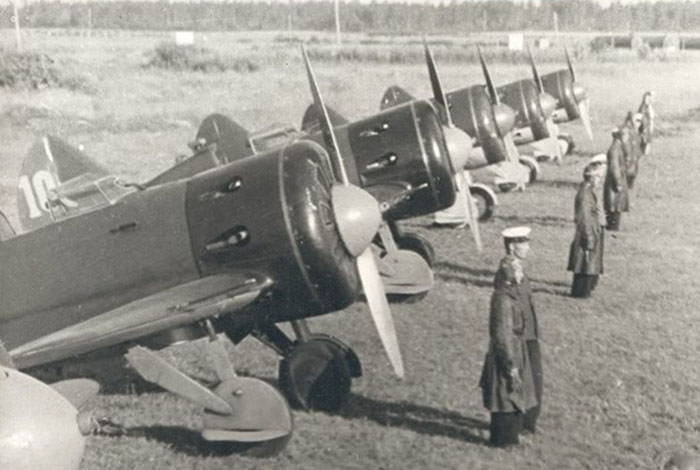
It's interesting to note that in this period the undersurfaces of planes were painted silver or light grey, not light blue or blue-grey.
This photo of a line of I-16s of different versions in 1939 (the same line than above) shows the change in painting standard occurred in 1937:
the older type 5s (closer planes on the photo) were painted in khaki, blue grey ad with black cowling. Spinners and tails of these planes appear painted possibly in red.
the newer type 17s (last 3 planes of the line) show not longer black cowlings, and the AE-9 light grey on the landing gear doors and cowling (all metal-skinned parts) is clear lighter than the previous blue-grey, while wood and fabric covered parts of undersurfaces were probably AII silver or AII light grey. The new AII green appears not different by previous color on bw photos.
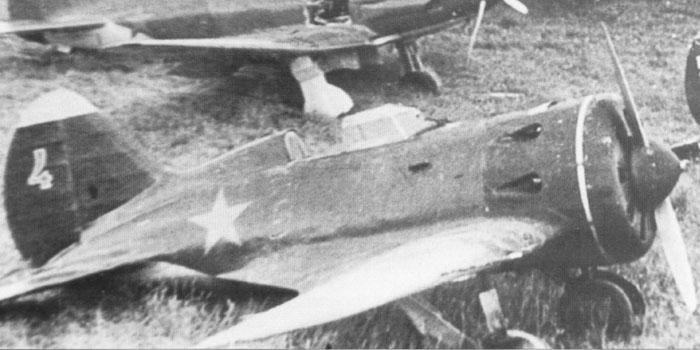
I-16 type 5 captured at Kaunas, Lithuania, in summer 1941. Its tail is marked with a 4, probably red with white outline, and has a white tip.
Note the black cowling and apparently silver fuselage undersurface.
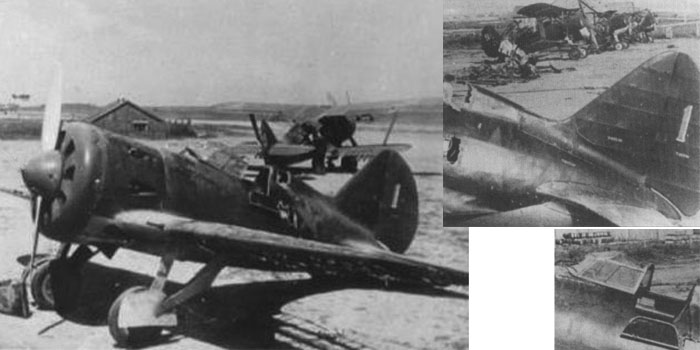
I-16 type 5 damaged on the airfield and captured by Germans. The number 1 painted on the rudder looks red with white shadowing.
Noteworty is the detail of the production number 521536 painted in white on the rear fuselage, the stabilizer and the rudder.
As usual, the frames of the windshield and the front of the prop blades is unpainted.
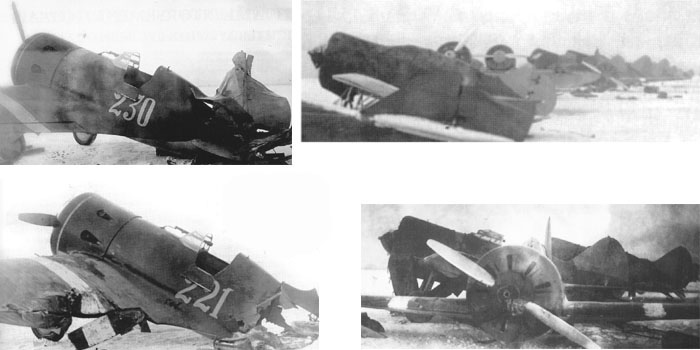
Images of 4 I-16 type 5 of 26 IAP destroyed (aside an UTI-4 and an U-2) on 26/12/1939, during the winter war with Finland, because Lt. V.S. Tsyganenko crashed into the row of sparked planes.
From the photos, the planes reveal some interesting characteristics:
white 230 and 221 were type 5 with later windshiweld and telescopic gunsight, probably with olive uppersurfaces, black noses and blue-grey undersurfaces; they have a white rudder and stabilizer, and roughly painted white stripes on their wings. It's impossible to say if their spinner were white, as on some planes of the line, or black as other ones.
The line include I-16 type 5 with early sliding windshield too.
(Images from Red Stars 7 of C.F. Geust)

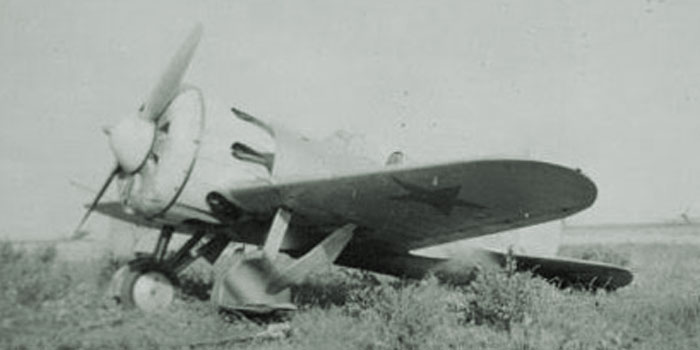
These rare images of uncamouflaged I-16 late type 5, perhaps of a training unit, show the livery that was more typical on I-153 and other types: metallic parts were painted with light grey AE-9, while fabric/wood parts were painted AII aluminium, or perhaps with AII light grey, with more glossy finish.
Note the stars positioning, typical of pre-war planes.
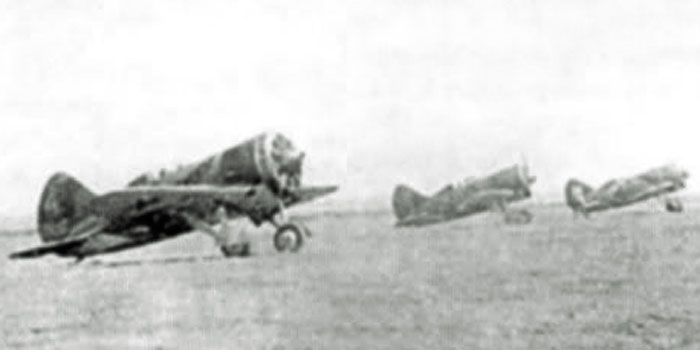
Photos of I-16 type 5 or 10 of 56 IAP that fought in Khalkhin-Gol war against Japaneses, taken in July 1939. The planes probally show a camo made with light (grey?) blotches over the standard green livery, as seen on I-15 bis employed in the same war.
The closer plane (yellow 4?) has a late type windscreen with reflective gunsight, while the secobd one (yellow 5?) has the early windshield with tubular gunsight.
Again, the positoning of the red stars and bort numbers is typical of the prewar standard.
(from Voennaja Armada 2, 2001)
I-16 type 10 was introduced in 1937; it was equipped with an M-25V engine, had two synchronized 762 ShKAS machine guns on the nose in addition to those on the wings, had extra ribs on the upper side of wings, shortened ailerons, flaps, and could be equipped with retractable ski landing gear for winter use that required some small recesses for the ski tips under the engine cowling. Many type 10 were converted into type 18 or 24 in late 1939.
I-16 type 17 was similar to 10, but the machine guns on the wings were replaced by 20 mm ShWAK guns. It was produced in 1938-39. Many type 17s were later converted into type 27 or 28.
I-16 type 18, introduced in October 1939, was equipped with the more powerful Shvetsov M-62 engine. Externally, one can see a slight protrusion under the engine cowling due to the large oil cooler, whose outlet was strongly oblique.
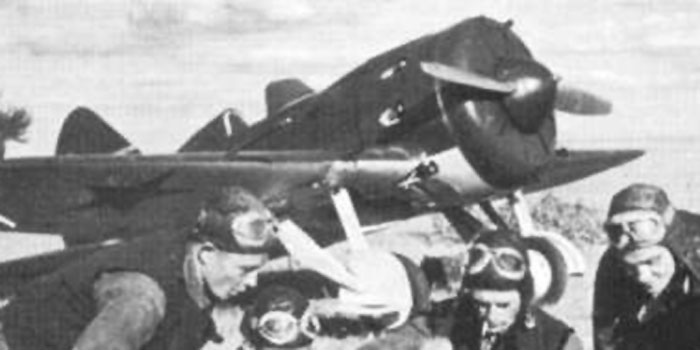
The manual for maintenance for I-16 describes to use AE-9 light grey on metal undersurface parts, and AII light grey, that is very similar, on the fabric or wood-skinned parts.
Some reports from Finland and other sources suggest that some I-16 had aluminium undersurfaces: this probably was instead of AII light grey on wood and fabric-skinned parts only.

 Two
images of UTI from a prewar movie. The different shade of metal panels and
fabric/wood surfaces is evident, as the metallic shining of aluminium paint
under the wings (reflecting the light doors of the landing gear) and rear
fuselage.
Two
images of UTI from a prewar movie. The different shade of metal panels and
fabric/wood surfaces is evident, as the metallic shining of aluminium paint
under the wings (reflecting the light doors of the landing gear) and rear
fuselage.
Right: another I-16 from below shows silver on the outer wing panels, rear fuselage, tail and ailerons.

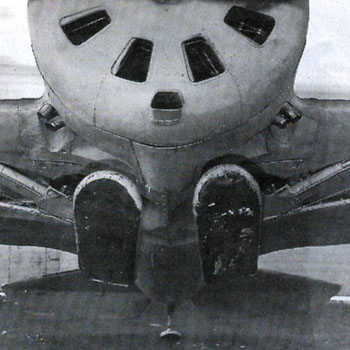 Type
10 and later introduced the possibility to retract the ski landing gear too.
The tips of the skis entered in a recess well visible under the engine cowling.
Type
10 and later introduced the possibility to retract the ski landing gear too.
The tips of the skis entered in a recess well visible under the engine cowling.
The plane photographed here is probably a type 17, recognizable for the barrels of ShVAK guns.
Right: a test of retraction of the ski gear.
(From Polikarpov I-16 fighter of Y.Gordon and K. Dexter)
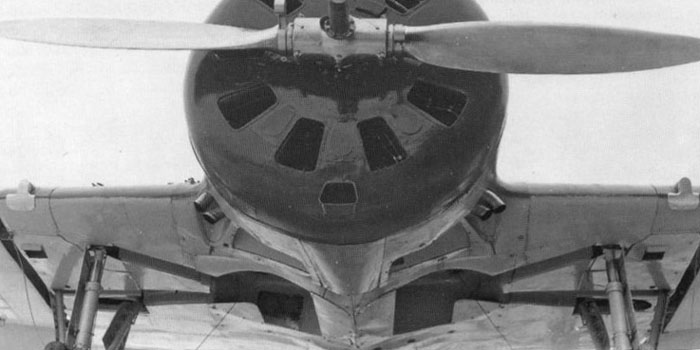
A detail of the partially closed wheel bays of a late I-15 with retractable ski gear.
http://scalemodels.ru/modules/forum/viewtopic_t_4735_start_1140.html
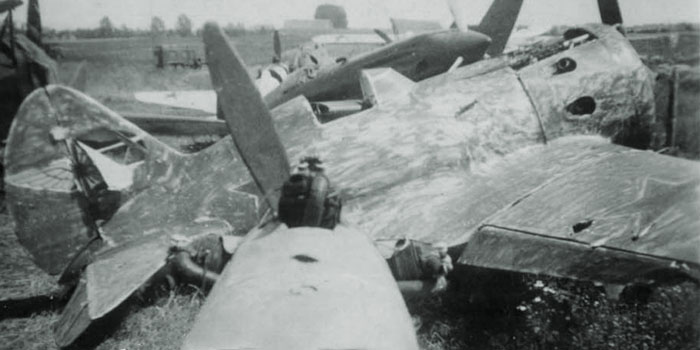
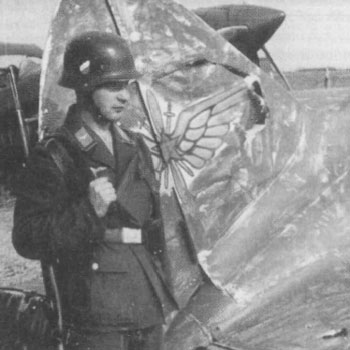 This
type 10, originally painted grey, was crudely camouflaged with green strokes.
The emblem on the tail could be of a school of flight.
This
type 10, originally painted grey, was crudely camouflaged with green strokes.
The emblem on the tail could be of a school of flight.
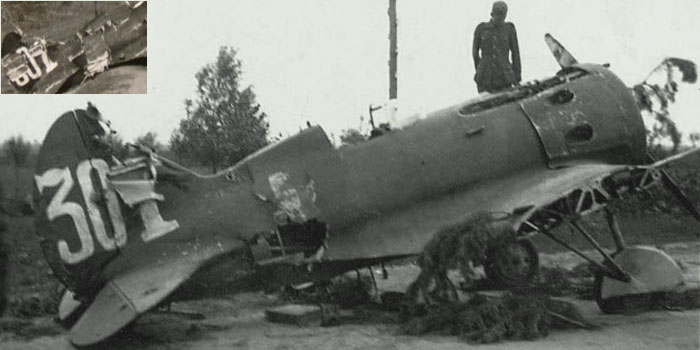
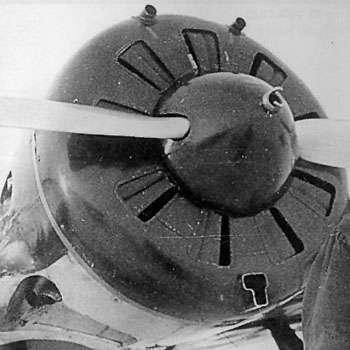 White
301 is probably a type 17 characterized by the strange three-digit bort number
on its tail. From other photos, it is known to have not spinner.
White
301 is probably a type 17 characterized by the strange three-digit bort number
on its tail. From other photos, it is known to have not spinner.
The smaller image shows a large star-shaped hole on the fuselage, probably made by German souvenir hunters, that gives the ida of how large was the red star, not contrasting on the main image. Such a large star could have been painted after the war's outbreak.
Left: the nose of the type 17. Note the T-shaped oil cooler inlet.
(from Istrebitel I-15 of Maslov)
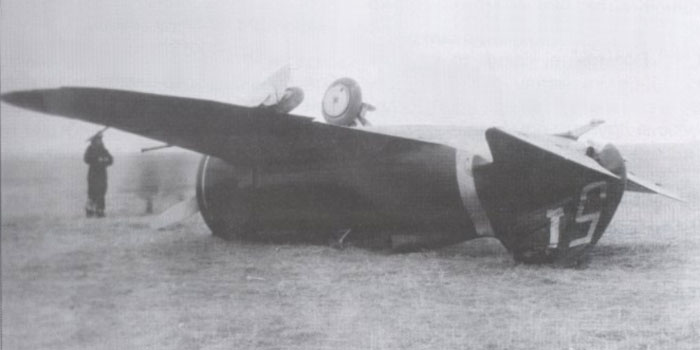
5-1 looks a type 17; this was the plane of 2nd leutnant Katalov of 22th IAP crashed during the fights against Japaneses in Nomonhan, Manchuria, in 1939.
The planes were delivered to the unit in a light grey livery, but this resembled the colors of Japanese Ki-27, leading to dangerous misunderstandings. So the uppersurfaces were repainted green, leaving only a light grey band around the fuselage.
The characteristic n.51 (or 5-1?) shows two different sizes for the digits; these digits are aligned on their top (differently from what we see in some profiles); their different size could be determined by the space available. It's unknown how the numbers appeared on the other side.
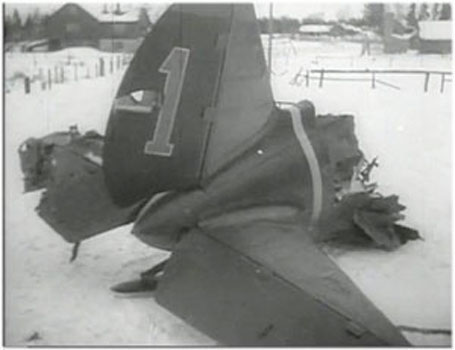
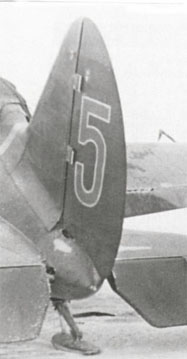 Left::
Red 1 features a yellow (?) band across the fuselage and a red (?) cap at
the top of the tail; this photo was taken in Finland during the Winter War;
it could be a plane of 25th IAP.
Left::
Red 1 features a yellow (?) band across the fuselage and a red (?) cap at
the top of the tail; this photo was taken in Finland during the Winter War;
it could be a plane of 25th IAP.
Right: the tail I-16 red 5 of 25th IAP during the Winter War shows many similarities to red 1, including the yellow (?) band and the red (?) top.
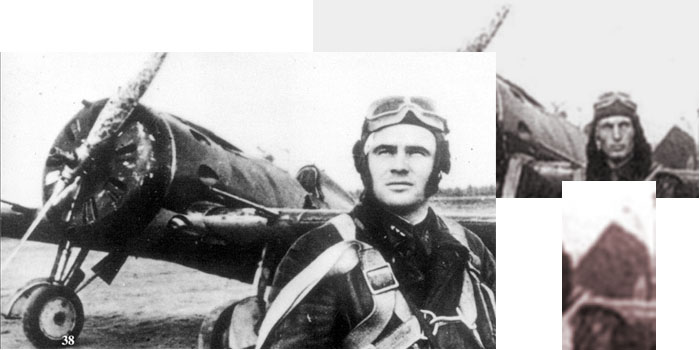
The I-16 type 17 of Grigoriy Sergeyevich Zhuikov, commander of a squadron of the 191 IAP that defended Leningrad on September 1941. He obtained 7 victories flying on I-16s.
The plane is often represented in profiles as having a red 8 outlined in white on its tail. Note the white tail tip.
The plane seems to have the standard finish in AII green (probably with light grey/silver undersurfaces) altered with some black: the cowling seems to have some accurately painted ovals between the exhaust tubes recesses, but what we see on the sides of the fuselage are black brush strokes hurrily put on. It's impossible to say if the rear fuselage, wings and tails were altered in the same way. The propeller, originarily unpainted, looks dotted with green and black small dots made by brush, not traces of wearing.
Difficult to say if the small white dots on the nose are traces of aluminium visible through chipping or what else; maybe the ground crew could have dotted the prop with a light color too to cover metallic reflections, and made dots on the nose for mistake.
I-16 type 24 was the standard version of 1940, equipped with the new engine Shvetsov M-63, a new AV-1 propeller with more bulged spinner, a tailwheel instead of the skid, possibility to bear two 93-litre drop tanks, improved landing gear legs, openable cockpit door on the right side too.
I-16 type 27 was similar to type 18, but the wing machine guns were replaced by 20 mm ShWAK guns. It was built betwen 1939 and 1940.
I-16 type 28 is similar to 24, but the machine guns on the wings were replaced by large 20 mm ShWAK guns.
I-16 type 29 entered production in the second half of 1940. It was the last variant, dedicated for ground attack. It was characterized by six rocket rails and relative reinforcing metal plate under the wings, a 12.7 mm UBS in the lower part of the fuselage, by the oil cooler moved on the right side, and by a slightly modified landing gear (moved slightly outside and shorter) to make room to the UBS between the wells; the prop blades wee slightly shortened too (diameter 2.7 m instead of 2.8). Unlike the previous models, type 29 hadn't the possibility to be equipped with a retractable ski gear. See http://sovietwarplanes.com/board/index.php?topic=1177.msg7293#msg7293
I-16s built between June 1940 and June 1941 conformed to a new standard of painting:
 AII
gloss camouflage green for uppersurfaces
AII
gloss camouflage green for uppersurfaces
 AII light blue for undersurfaces.
AII light blue for undersurfaces.
It's not clear if these paints were utilized on metallic parts too, or if they were painted with A-18f and A-19f alkyd paints. Some photos show a lighter shade on the metal parts (cowling, stabilizer root), suggesting that different paint could have been utilized, but the most of the photos don't show this difference.
 A-19f
gloss green for metallic planes
A-19f
gloss green for metallic planes
 A-18f
light blue for metallic planes
A-18f
light blue for metallic planes
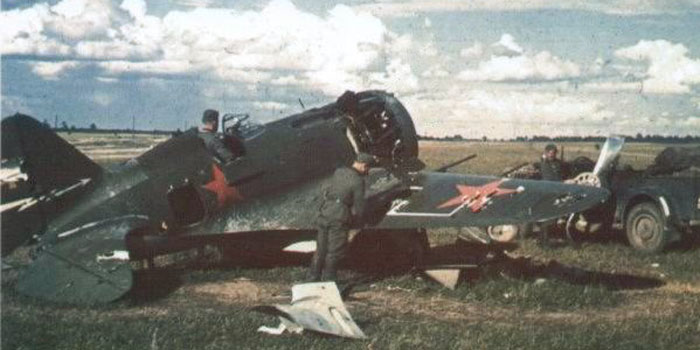
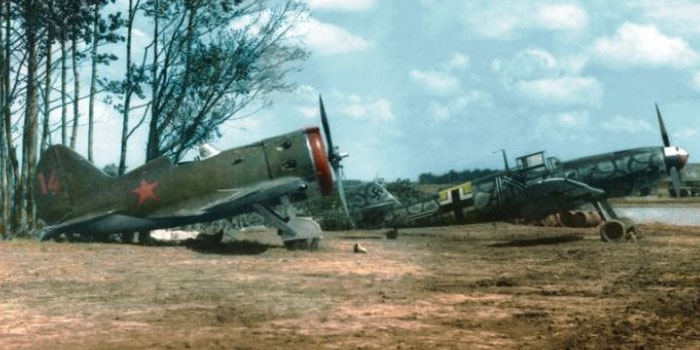
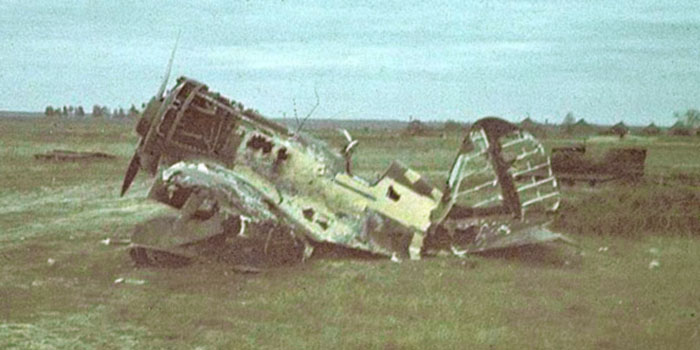
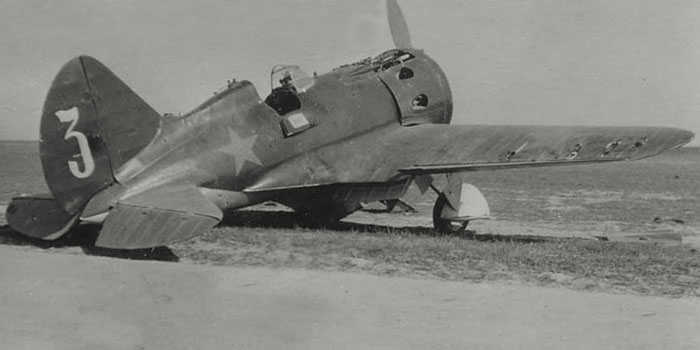
 A
photo of an I-16 type 24 with some damage. Note the still gloss finish. Paints
became matt with ageing.
A
photo of an I-16 type 24 with some damage. Note the still gloss finish. Paints
became matt with ageing.
Right: the PAK-1 gunsight.
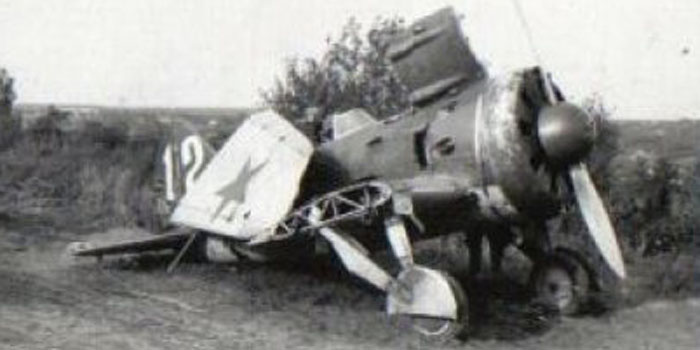
I-16 type 24 with an ordinary prewar AII green/light blue finish and a large white 12 on its tail. Note the strange wearing of its front cowling, that seems to show the underlying metal, or perhaps some field camouflage; perhaps the piece is from another plane.
The photo was probably taken in summer 1941 by some German soldier.
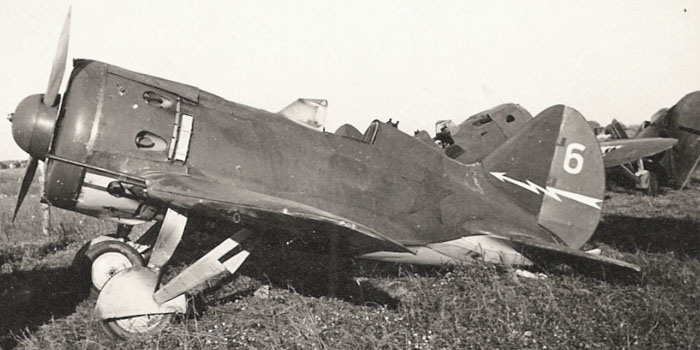
I-16 type 28, similar to 24 but recognizable for the protruding barrels of ShKAS guns.
Note the white (or silver) lightnings, characteristic of an unit.
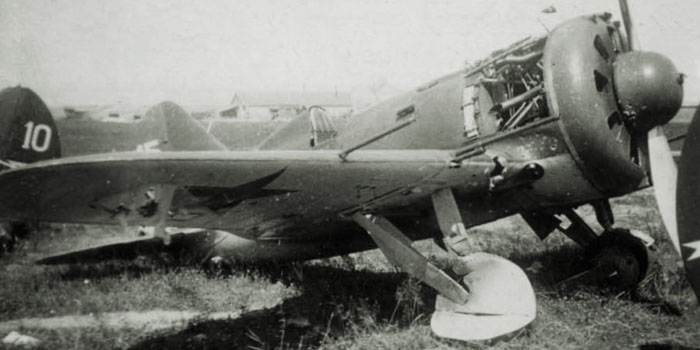
Another I-16 type 28, similar to the more known type 24 but armed with two guns on the wings.
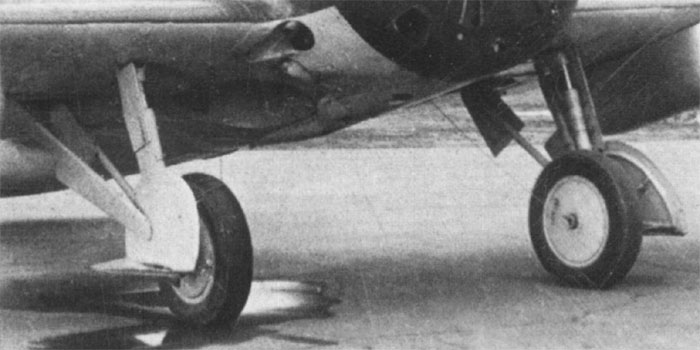
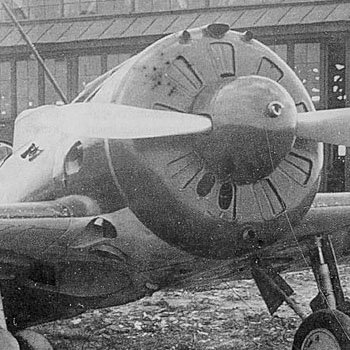 The
landing gear of the type 29 was modified to find some space for an UBS 12.7
mm machine gun between the landing gear bays. Note the asymmetric inlet and
outlet of the oil cooler.
The
landing gear of the type 29 was modified to find some space for an UBS 12.7
mm machine gun between the landing gear bays. Note the asymmetric inlet and
outlet of the oil cooler.
(From Polikarpov I-16 fighter of Y.Gordon and K. Dexter)
Right: another variant of the nose of type 29, where the inlet for oil cooler was internal and required to open an elliptical hole both in the engine cowling and on its shutters; the latter one is visible here because the shutters are closed, but is aligned behind the other one when they are open.
The type 29 could be equipped with radio, whose mast is visible on the right side of the nose.
(From Istrebitel I-16 of Maslov)
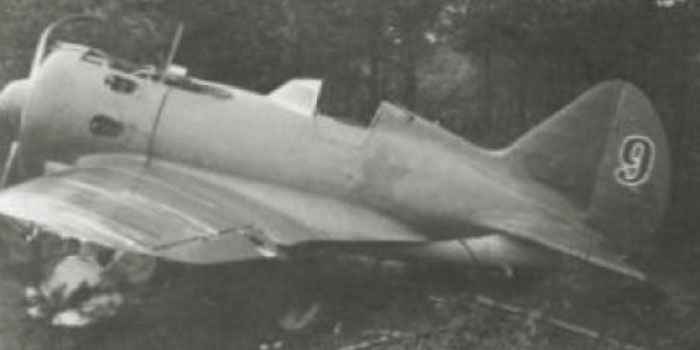
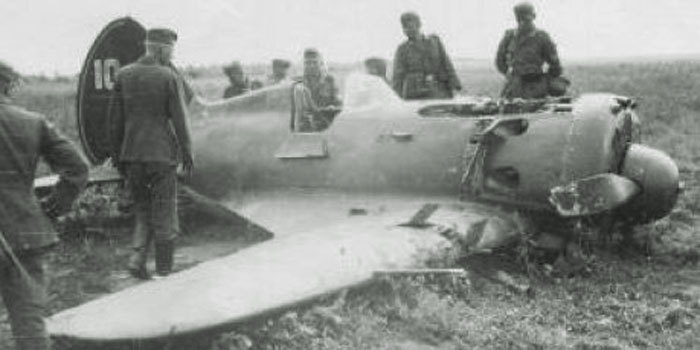
I-16 white 10 is a type 29, identifiable for its bended radio mast on the nose side. Despite its ordinary green/light blue finish, it shows an interesting tail painted black. with a thin lighter nail, possibly red.
The front of the prop blades looks painted black or green.
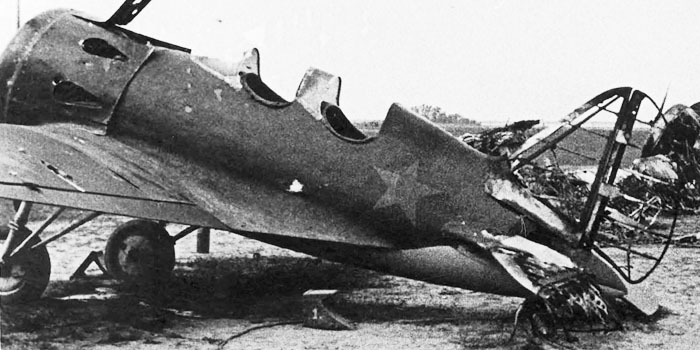
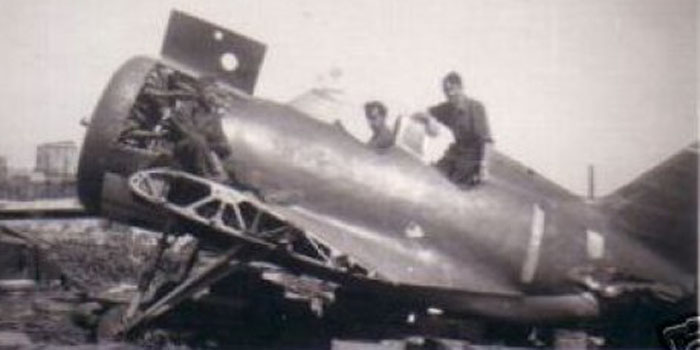
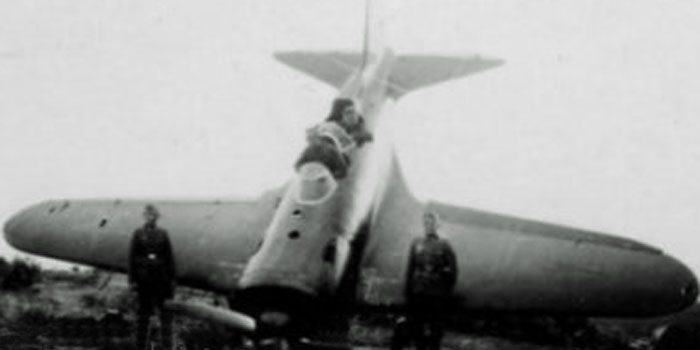
This UTI-4 (or UTI-2?) unusually has the same front windshield of a singleseater I-16 instead of the usual one-piece type.
Below, the photo of a similar plane, or perhaps the same one in a previous date. The engine cowling looks that of an UTI-4, but the rear windshield is as on UTI-2.
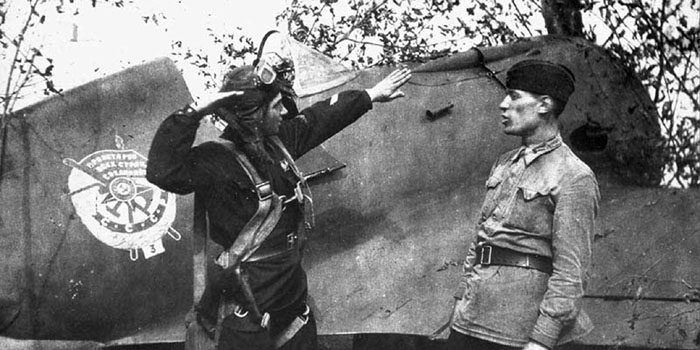
A strange I-16, probably type 24 but with the windshield of a trainer, in a propaganda photo.
The mark on the side is particularly interesting.

Some new temporary polichromatic camouflages were experimented on some I-16s and other planes during the summer of 1940, but, despite the good subcess obtained in masking planes, the idea wasn't adopted mainly for the difficulty to provide huge amounts of new paints to the units.
To know more, go here
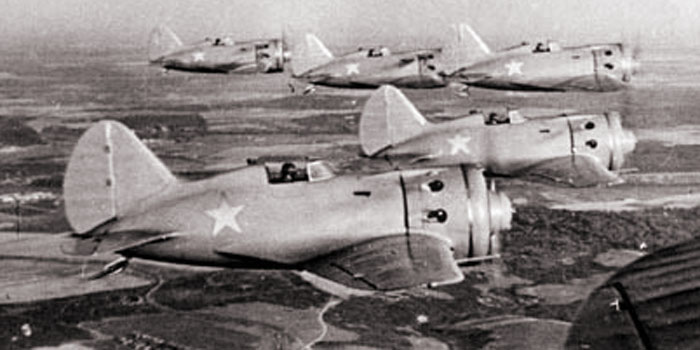
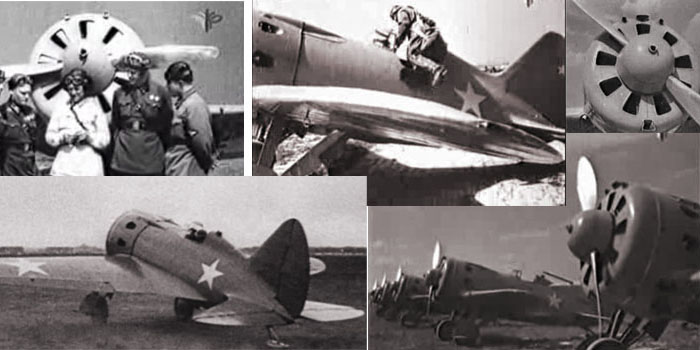
The aerobatic team "Krasnaya pyaterka", that means"the Red Fives" first exhibited publicly performed for the first time on May 1st parade 1935.The team existed up to 1940 and many famous pilots were members of the team. They used different I-16s over the time. Original 1936 planes were painted in bright red with black engine cowlings and no stars.
Later, planes were painted in silver with black trimming.
The planes on these photos are fortemost type 24 of 1940, painted gloss red overall with silver stars and unpainted prop blades. Note the tail ski instead of the usual wheel.
In some photos, the planes show a small silver star on the rudder or numbers, but in general tghety were simply red.
http://sovietwarplanes.com/board/index.php?topic=735.0
http://scalemodels.ru/modules/forum/viewtopic_t_12538.html
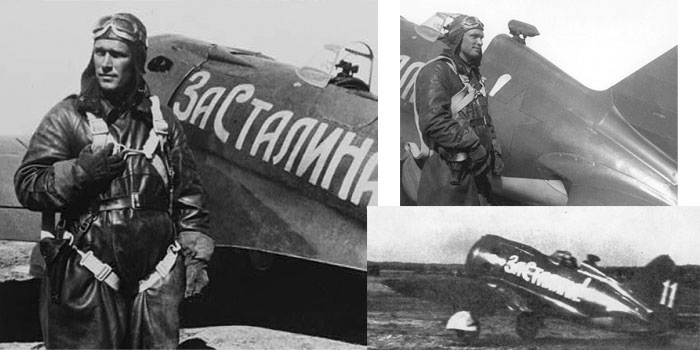
Propaganda Photos of the ace Kovalenko's I-16 type 24, tail No 11, on
6 July 1941; the plane had «Za Stalina !» on the left side and
«Za Kommunism! on the other side. The pilot photographed is Safonov.

The type 18 of lieutnant S.G. Surzhenko, white 13, of 72 SAP("Smeshanii
Aviatsionii Polk" = Mixed Aviation Regiment)
of North Fleet, Vaenga airport, summer 1941.
It had written 'Za SSSR" on the left side; it's unknown if there was any other slogan on the other side.
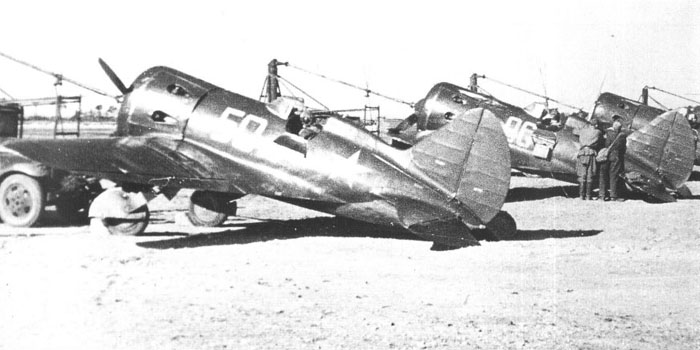
A line including white 50 (type 5) and 96 (type 10) in 1941. The position of bort numbers is interesting.
All the planes have their starter truck in front of them.
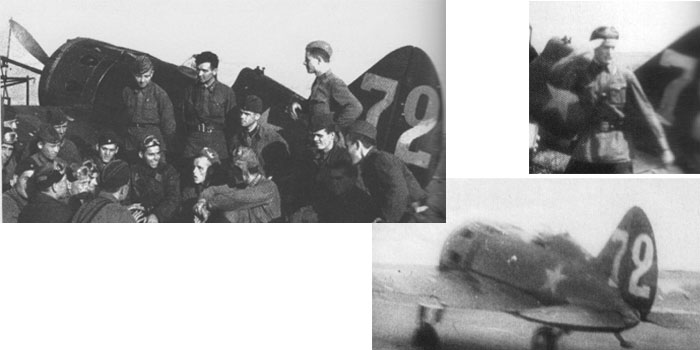
Images of the I-16 of P.P.Savenko, commander of 4th squadron of 67th IAP, South Front , summer 1941.
The large number has a color strongly changing between different shots; it could be brush-painted aluminium.
Note the lack of the wheels doors, often removed because they affected the aerodinamics of the plane when the gear was extracted.